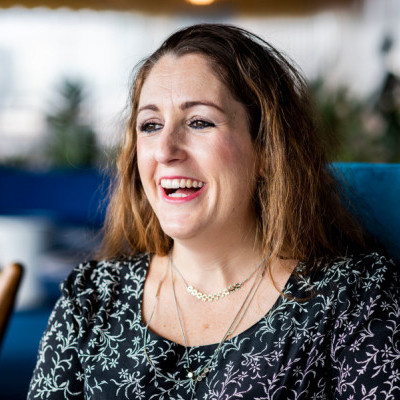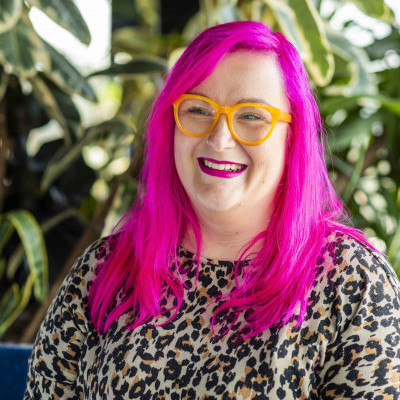Bringing Inclusivity to Consumer Healthcare Has the Pandemic created a Perfect Storm?
Pandemics have historically pushed humans to imagine new futures and stretch our thinking. The events of the last few years have impacted the consumer healthcare sector hugely; expectations have never been higher, brand loyalty lower and trust harder to get
As challenging and painful as the pandemic has been, it’s also shone a light on just how necessary customer-driven improvements and a better experience are for the growth and success of consumer healthcare.
One of the key areas needing improvement is inclusion and more specifically, inclusive design. Allied to the rising upswell of conscious consumerism, how can inclusive design play a more profound role in the future of consumer healthcare?
Our resident experts, Emily Yates, Head of Accessibility, and Lisa Baker, Human FactorsPrincipal Consultant, tackle and debate the subject and offer a path forward for the industry…

Emily: “Interestingly, disability representation – or the lack of it – has been amplified during the pandemic. Many disabled consumers have been waiting for better representation of themselves, and their wants, needs, and requirements across numerous industries, and I actually think the pandemic has shown how far behind we are in representing people inclusively. When those with chronic illnesses and additional requirements have had very little guidance from authoritative bodies in terms of keeping themselves safe, it becomes more apparent that disabled people are still not adequately represented in many areas, with consumer healthcare being one of them. We’re not as far forward as we need to be with inclusive design. The positive is that there’s a lot of room for improvement.
It’s this continuous improvement when designing products and services that is truly vital. The key to challenging and stretching your thinking is to actively engage with people who have differing perspectives and lived experiences. This enables an understanding of how best to design products that satisfy diverse human needs and motivations, expand human interactions by making them more inclusive, and view diversity as a source of inspiration and innovation for creative professionals.”
So, how do consumer healthcare companies improve when it comes to inclusive design?
Lisa: “Right from the get go, it’s got to be high up on the agenda: contextual research, understand the whole process, map out consumer journeys and the service blueprint. If consumer healthcare businesses are genuine in their pursuit of inclusion, then it needs to be higher up the food-chain and at the inception of products and services.”
Inclusive design isn’t just better design, it’s better business. However, according to P&G, only 4% of businesses are actively creating products for disabled people. So what is the size of opportunity here?
Emily: “The Purple Pound, otherwise known as the spending power of disabled people and their households, is worth over £250 Billion a year to UK businesses, so there’s definitely a profitable – rather than just an ethical – pull for inclusive design. But it’s a bit more nuanced than that. Approximately 1 in 5 people in the UK are disabled and only 8% of those disabled people are wheelchair users. Yet, the majority of any business’ focus is still on the experiences of consumers with physical impairments and, to a greater extent, this focus almost always stops at the front-facing experience. We should be designing for those with sensory and cognitive impairments, as well as those with temporary and situational impairments. And, vitally, we should also be designing inclusively for our disabled staff members; creating an accessible job advert is still inclusive design!”

How do healthcare companies tap into this vast audience in a meaningful way?
Lisa: “There’s so much more to be done. For example, people that might have more than one impairment, whether that be physical, or cognitive. How are we going to design somethings that covers all these aspects?
Emily: “It’s all part of the inclusive design puzzle: it’s not just about coming up with a design solution that caters for less conventional, or ‘extreme’ consumers, it’s about the consideration of that full user experience, and the decisions that then leads to. When designing inclusively, we need to start really considering whether there is satisfaction and joy in product use, and how likely disabled consumers, or those with additional requirements, will be to re-purchase that product and experience, or even tell their friends about it. That’s all part of inclusive design.”
Recent times have definitely put a microscope on healthcare companies, their products and services and the Covid response and vaccine rollout has viewed consumer healthcare through a new lens. Misinformation and new sources of information have played a significant role in a drop in trust in healthcare brands. Can inclusive design help build trust in consumer healthcare?
Lisa: “There’s no doubt that making your products more inclusive, not just in terms of impairments, but also crucially in terms of religion, ethnicity, sexual and gender identity, will go some way to rebuilding trust in brands. The representation that Emily mentioned earlier removes obstacles between the product and the consumer. That representation also includes factoring in socio-economic factors and emerging, frontier markets. Key questions like ‘what is path to the consumer?’ And how do we make our products commercially inclusive? This commercial inclusion opens up a broad array of previously untapped commercial opportunities for consumer healthcare brands but also engenders trust, if the consumer feels the brand understands their world.”
In terms of the products and services themselves, what do you feel is right way to approach to their development and what’s missing at the moment?
Lisa: “A lot of the time it is focused on primary and secondary packaging and how easy it is for people to open and use for those living with arthritis and other muscular skeletal injuries. In the past, a lot of companies felt that if they’ve done that then they’ve designed an inclusive product. We need to push it further than that. Cognitive inclusion is crucial and so often ignored, for example.
Designing for multiple impairments is a challenge but one we see that's routinely ignored by the consumer healthcare industry.
As there’s been more of a move to empower consumers and move from prescription to over the counter, a lot of products have been made child resistant but this can be a huge barrier. We’re still waiting for a solution for the conflict between making something child resistant and making a product older age or dexterity friendly.”
So how do consumer healthcare companies improve these services and become inclusive?
Lisa: “So many of the improvements appear to be relatively straightforward and seemingly obvious but they only come about when you develop the products with consumers with lived experience and you need to have it early in product development and in terms of priority it needs. A good example is P&G’s Clearblue partnering with Be My Eyes, a vision mobile app, so blind or partially sighted women can immediately know what is happening with their bodies. It seems obvious but it wouldn’t have been fully realised without that stretched thinking and working with consumers with lived experience.”
Emily: “Many improvements only come about through an effort to build a rapport with different community groups and a desire to engage with an expanded consumer base. We need to empower genuine effort and interest, wherever possible. Inclusive design is not a tick-box exercise, but businesses are so worried about not getting everything perfect, that they often don’t take that first step. The message is clear; whilst you might not create the perfect product straight away, being empathetic and inclusive in your design processes will only improve consumer healthcare as an industry.
The COVID-19 pandemic has resulted in significant demand growth for over-the-counter medicines and services, so B2C healthcare firms will need to reinvent how they engage their customers, design for them and market their goods and services both directly and across clinician networks. Currently, actions such as educating consumers, reviewing product portfolios, rethinking channel strategies, and enhancing marketing capabilities are crucial but are only one piece of the inclusive design puzzle. Workshopping, ideating and iterating solutions with those with lived experience will be the key to ensuring a meaningful bond between healthcare brands and the consumer in 2021 and beyond.”
Written by:

Lisa Baker
Head of Experience Design & Sustainability
Lisa is a Chartered Human Factors Specialist with 18 years of experience across various industries, including healthcare, transport, culture and heritage. Lisa specialises in bridging human factors and service design to create innovative and sustainable customer services and experiences, grounded in evidence.

Emily Yates
Head of Accessibility and Inclusive Design
Emily has worked on numerous accessibility initiatives for national and international organisations, including the Olympic and Paralympic Games in Rio de Janeiro and Heathrow Airport. Emily has also worked with the Council of Europe and sat on equality boards advising premier league football clubs.